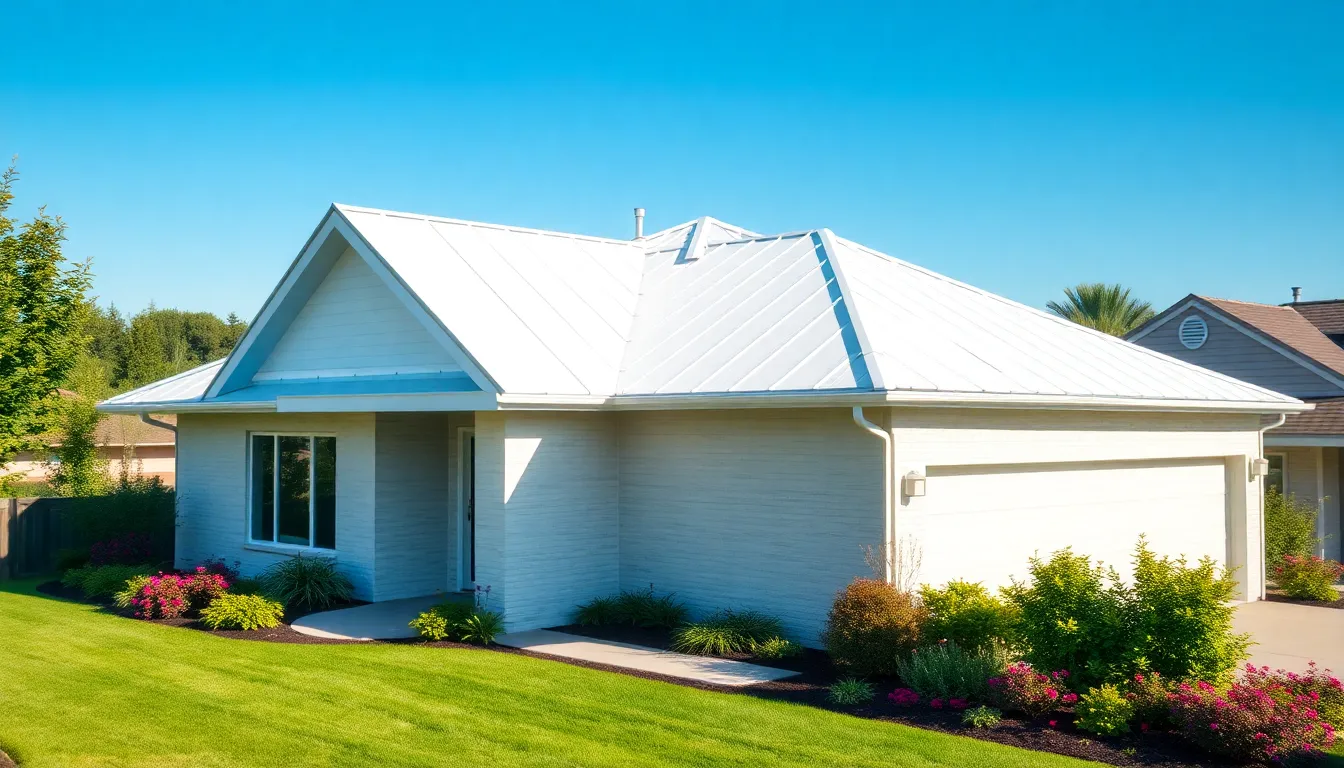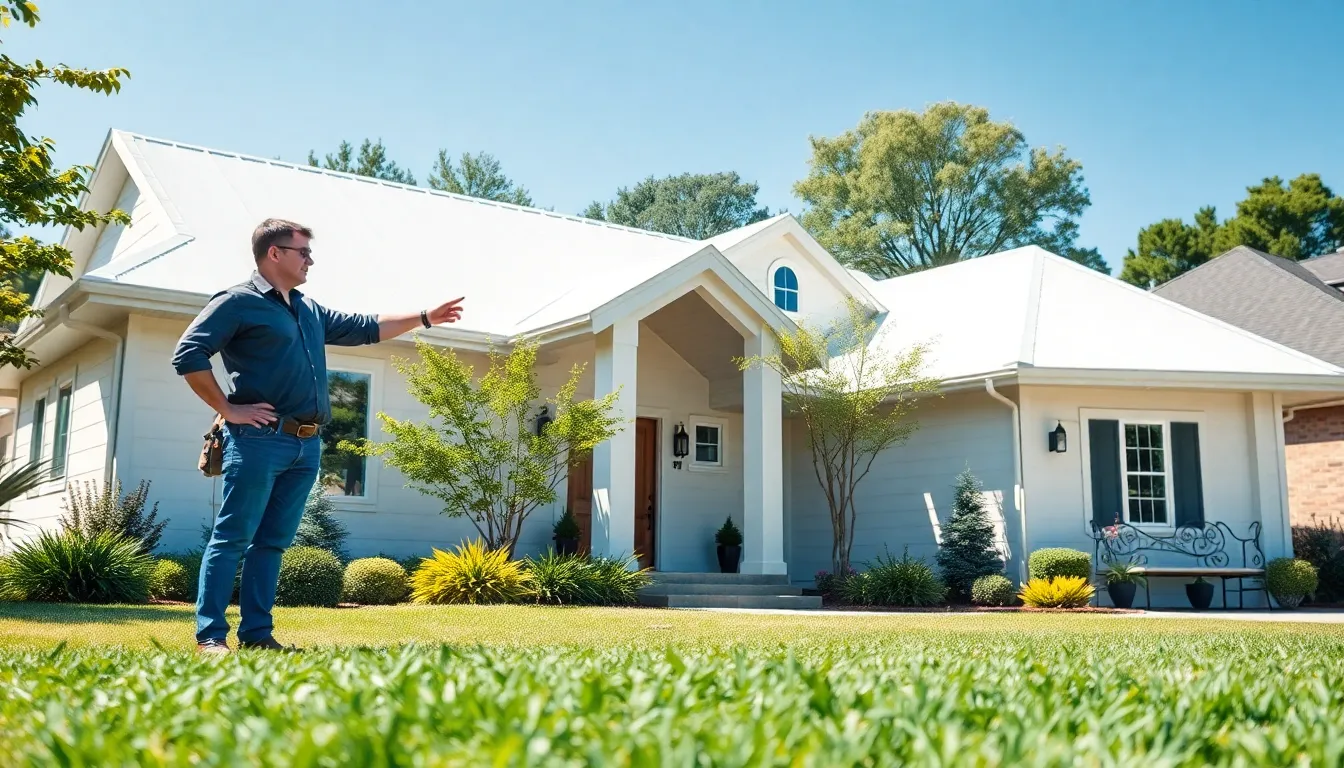When it comes to protecting a home, vinyl roofing is like mom’s home-cooked meal, it just makes everything feel safer and cozier. But what is it really? Is it just a fancy term for plastic sheeting? Not quite. In this guide, we’ll uncover everything you need to know about vinyl roofing, making it as easy as pie, without the calories. So, grab a cup of coffee and let’s jump into this versatile roofing option that can elevate your home’s protection while saving you some serious cash.
Table of Contents
ToggleWhat Is Vinyl Roofing?

Vinyl roofing is a type of synthetic roofing membrane made chiefly from polyvinyl chloride (PVC), often used in both commercial and residential applications. Picture a super-tough shield that protects your home like a knight in shiny armor. Commonly found in low-slope roofing systems, its flexible nature allows it to adapt seamlessly to various buildings, making it an appealing choice for many homeowners.
The unique aspect of vinyl roofing lies in its ability to withstand harsh weather conditions, such as heavy rain or sunshine that could melt away lesser materials. This roofing material comes pre-fabricated in large sheets, which are then laid across the roof surface, stitched or glued, offering a barrier against leaks and other water-related troubles.
Benefits of Vinyl Roofing
Vinyl roofing isn’t just another pretty face: it has a multitude of benefits that make it a practical option for homeowners.
- Durability: Its high resistance to punctures, tears, and impact means it stays intact for years, even when Mother Nature throws her best shots.
- Energy Efficiency: A white vinyl roof reflects sunlight, keeping the building cooler. This means lower energy bills, who wouldn’t want that?
- Low Maintenance: Unlike other materials that require regular upkeep, vinyl roofing is easy to clean and maintain, saving time and stress.
- Affordability: With lower installation costs and minimal maintenance fees down the line, vinyl roofing is budget-friendly without skimping on quality.
- Versatile Design: It can mimic other materials like shingles or tiles, giving homeowners the ability to achieve a stylish look while enjoying vinyl’s benefits.
Cost Considerations for Vinyl Roofing
When planning for a vinyl roofing project, it’s vital to crunch those numbers. The initial cost typically ranges from $3 to $8 per square foot, which can vary depending on thickness and brand. But remember, that’s just the tip of the financial iceberg.
Installations can cost anywhere from $5,000 to $20,000 total, influenced by roof size and complexity. Also, vinyl roofs tend to last longer than traditional options, so while the upfront investment might feel substantial, homeowners can expect to save money in the long run through reduced maintenance and repair costs. To really tip the scales in favor of vinyl, consider long-term energy savings from improved insulation.
Installation Process of Vinyl Roofing
Installing vinyl roofing is generally straightforward, but hiring a professional is often advisable to ensure quality and longevity. Here’s a basic overview of the process:
- Preparation: This involves removing old roofing material and prepping the surface for installation.
- Underlayment: A layer of insulation is added for energy efficiency and protection.
- Laying the Vinyl Sheets: Large sheets of vinyl are rolled out across the roof, carefully overlapping edges to avoid any gaps.
- Sealing: The seams are sealed to ensure a waterproof barrier.
- Finishing Touches: Finally, flashing and other necessary features are added, completing the installation.
Maintenance Tips for Vinyl Roofing
Even though vinyl roofing is low maintenance, some care can help it last longer. Regularly cleaning debris off the roof helps maintain its appearance and prevents mold or algae from growing. Using a gentle detergent mixed with water is usually sufficient for cleaning. Avoid harsh chemicals, as they can damage the vinyl.
Common Issues and Solutions
While vinyl roofing is durable, some issues may arise:
- Seam Separation: If seams begin to pull apart, applying a seam tape is a quick fix. Regular inspections can help catch this early.
- Pool Formation: If water accumulates in low spots, reinforcing the underlayment can help redirect water flow. Proper drainage systems are also key.
How Vinyl Roofing Compares to Other Materials
Vinyl roofing stacks up quite well against traditional materials like asphalt or metal.
- Asphalt: While asphalt might be cheaper initially, it often requires more maintenance and doesn’t last as long, making vinyl a better long-term investment.
- Metal: Though durable, metal roofs can be noisy during rain and hail. Vinyl, on the other hand, absorbs sound well, promoting a quieter indoor environment.
- Tile: While tiles can be visually appealing, they also bring more weight and complexity in installation. Vinyl roofing is lighter and more flexible, making it easier to work with.



